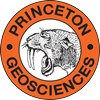
In the surface oceans, essential trace metals such as iron (Fe) and zinc (Zn) are present at extremely low concentrations, in the nanomolar to picomolar range. The bulk of these metals is bound in highly stable organic complexes. Previous research in our group has shown strongly bound metals to be generally unavailable to phytoplankton. To acquire their necessary micronutrients, marine phytoplankton have thus developed highly efficient metal uptake mechanisms that function at the limits imposed by molecular diffusion and by chemical kinetics. The uptake of iron, the most important of the micronutrients, is effected through a two-step mechanism involving reduction of Fe(III) into Fe(II), followed by transmembrane transport and oxidation of the Fe(II). This mechanism allows phytoplankton to take up Fe bound to some strong complexing agents. The uptake of other metals such as zinc is effected via transporters that bind them with high affinity and rapid kinetics. Our recent work shows that such transporters are able to extract metals from weak complexing agents, which thus increase metal biovailability in the presence of strong complexing agents.



